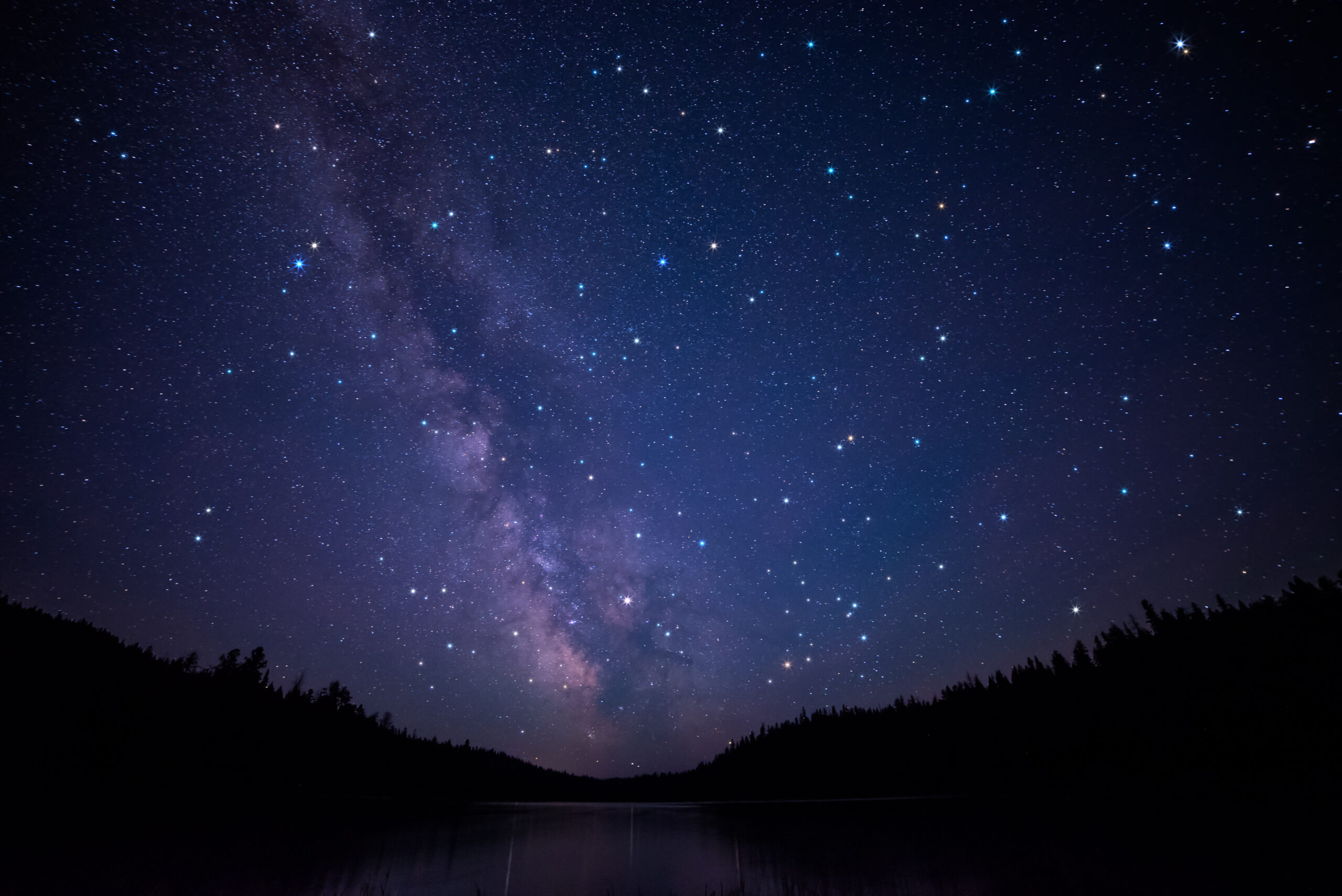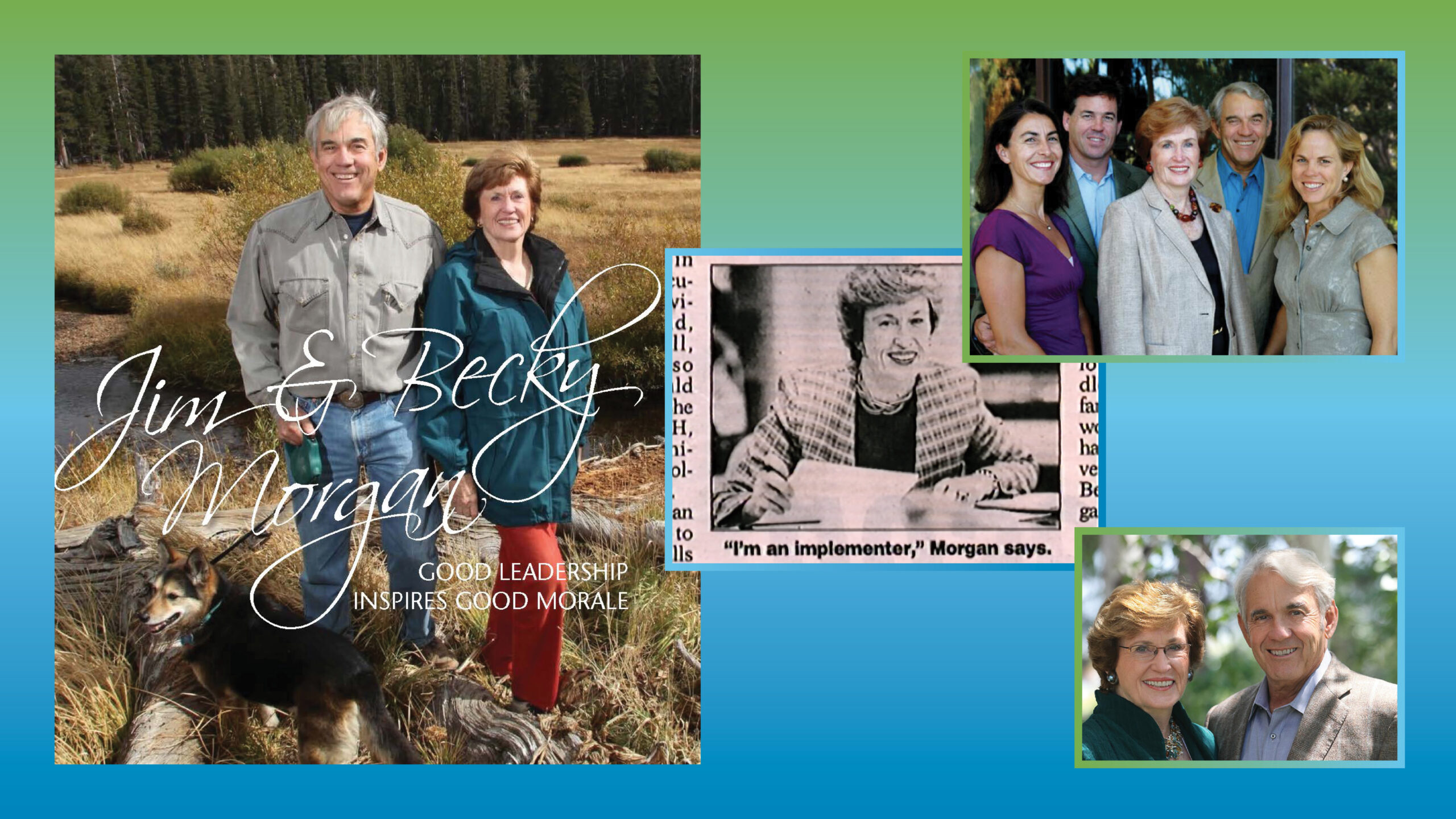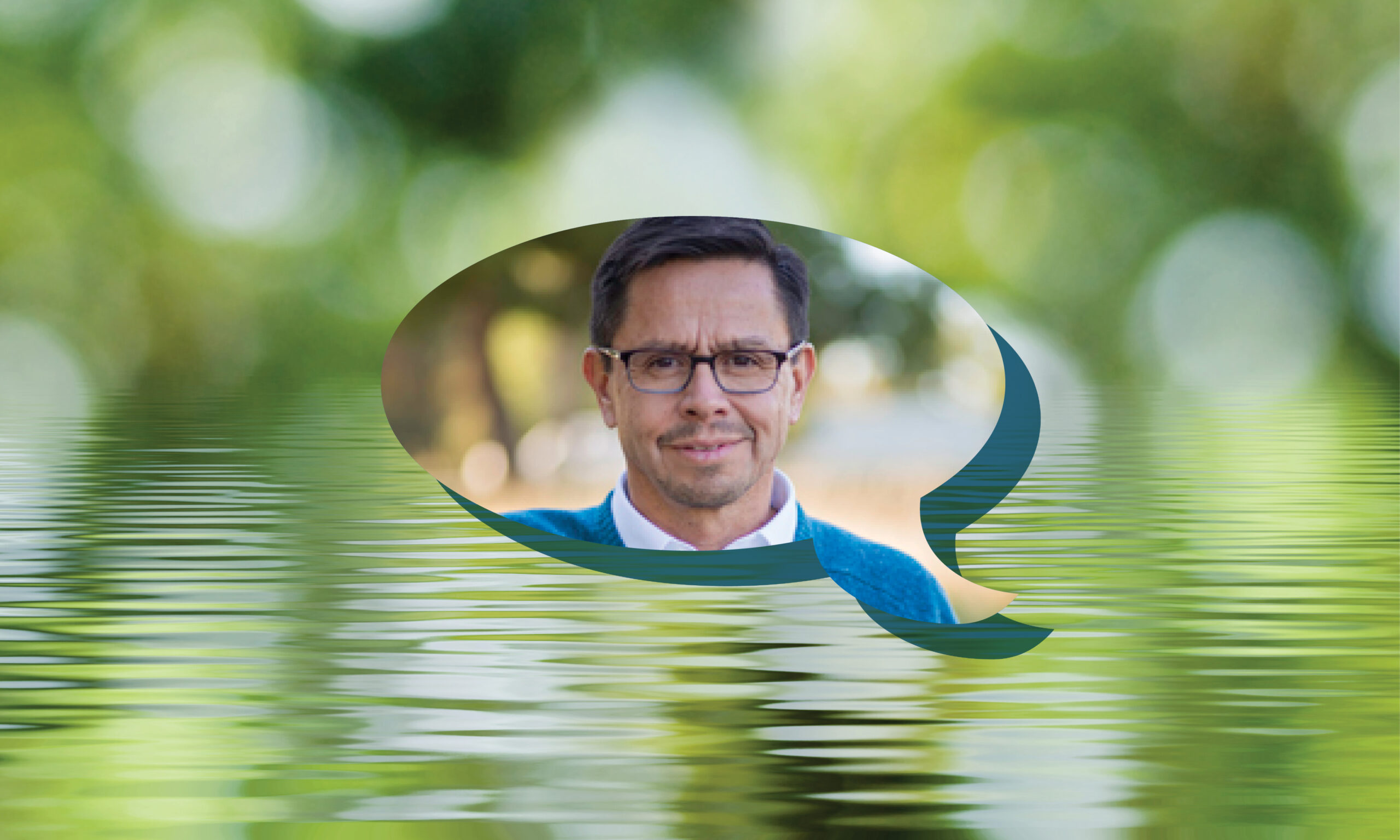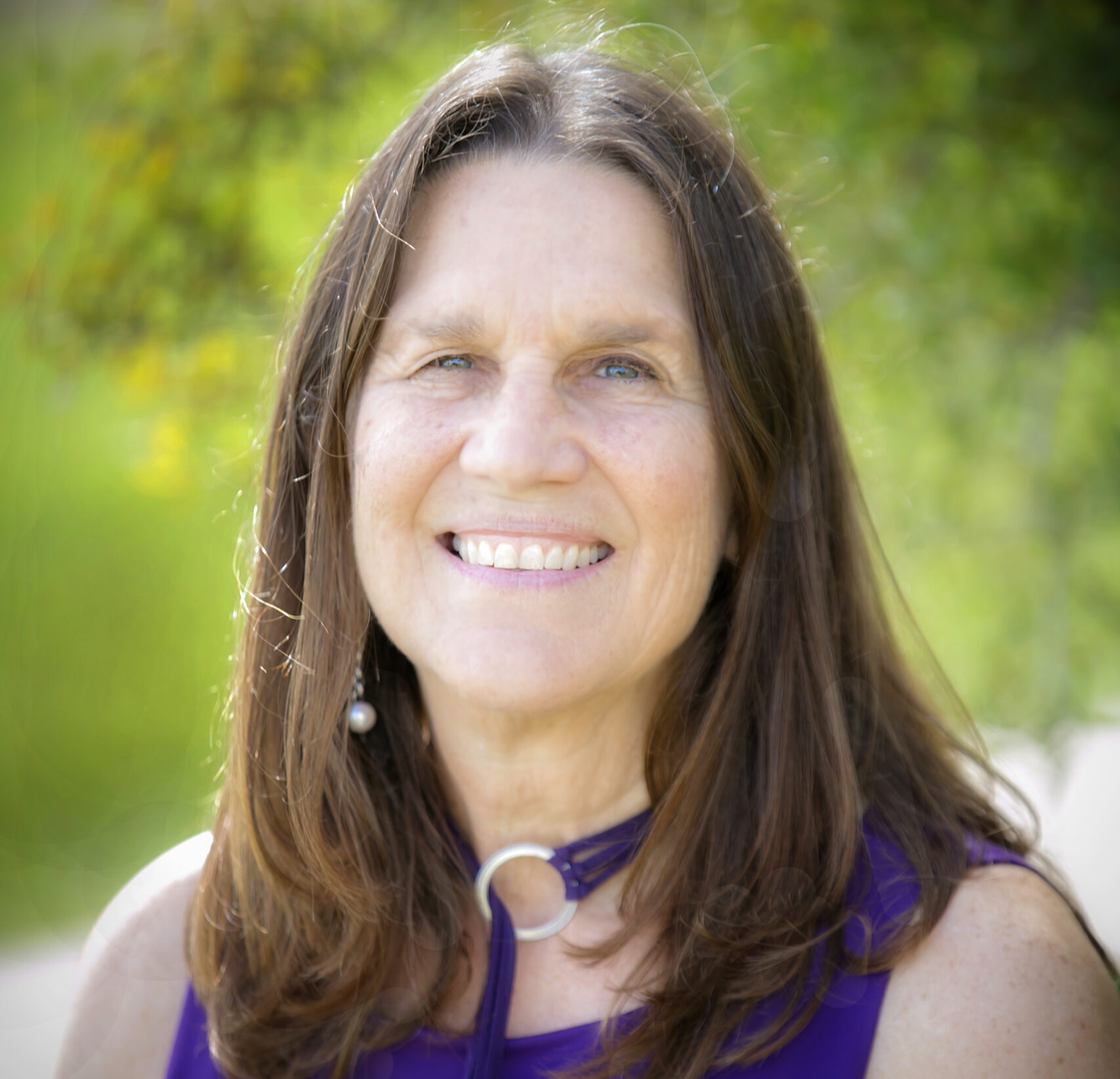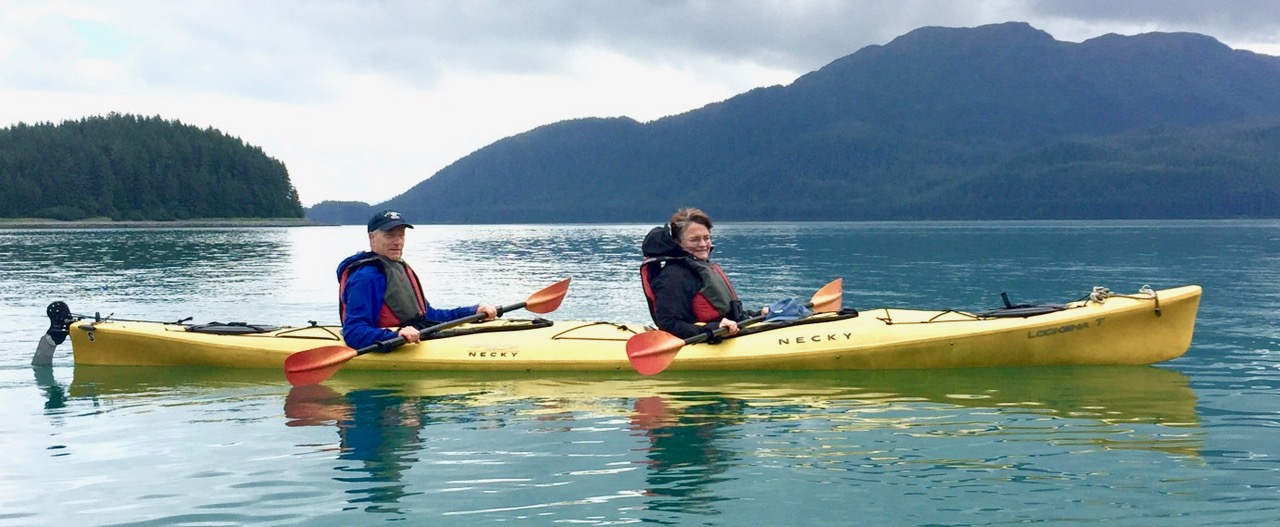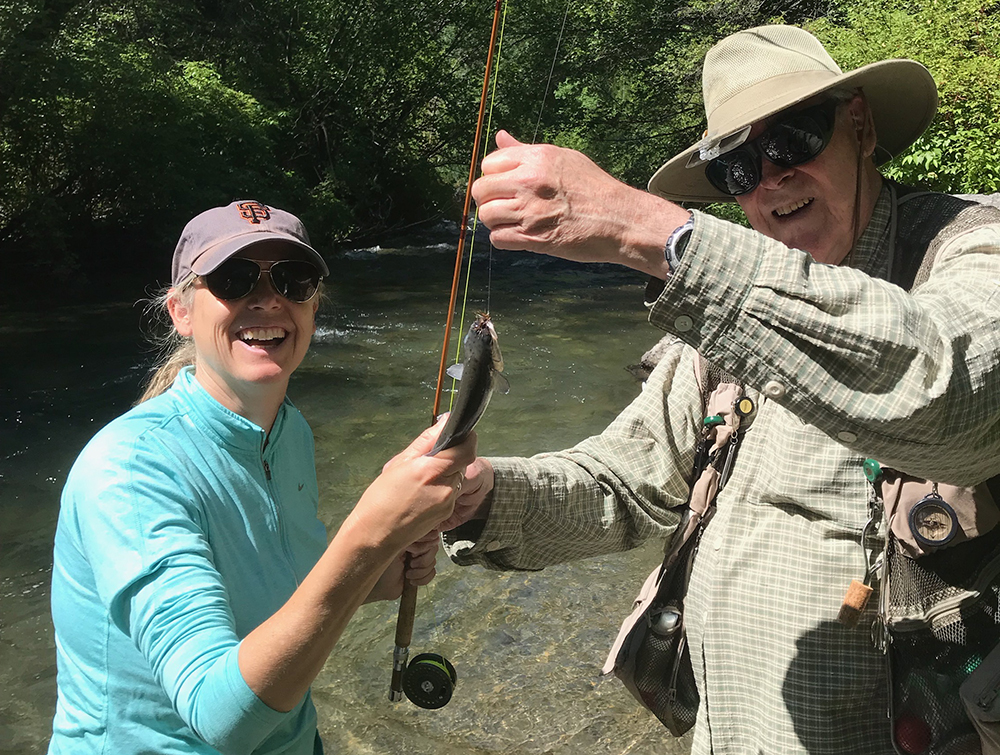
Kim Delfino and her father fishing together. Photo: Kim Delfino.
We recently caught up with Kim Delfino, longtime Sustainable Conservation board member, the former Director of Defenders of Wildlife (California,) and Founder and President of Earth Advocacy. Kim’s love of nature started at home, was nurtured at college, and has been growing ever since in and around raising a family while building her legal career in defending the environment. We hope you enjoy the conversation with Kim as much as we did!
What’s your environmental story?
Kim Delfino (KD): It all started with my dad. He loved fly fishing. Every summer he would pack up all the tackle and gear, along with us kids, in his old Willys JEEP. Our fishing road trips were bound, he promised, for ‘the most beautiful places ever.’ He took us all over Northern California and the Sierras: Fall River, Hat Creek, Walker River, and the Tahoe watershed. I learned to love nature on those trips, and even more so after getting my very own fishing rod at 13.
During my first year at UC Davis, Sharon Negri of the Mountain Lion Foundation spoke to our Intro to Environmental Studies class about the mountain lion population and their importance to California’s biodiversity and ecosystems. It just captured my imagination! I volunteered with the Mountain Lion Foundation throughout college. That’s where I met Bill Yeates, one of the public interest lawyers who inspired me to become an environmental lawyer. After law school, I went to work in Washington, DC, for a public interest and environmental law firm representing organizations ranging from Sierra Club and Center for Biological Diversity to the Humane Society, and many others.
After a few years of doing all kinds of environmental work I switched over to policy when I realized I just didn’t have the temperament for sitting in an office and drafting 50-page summary judgement motions. I also realized that I could win cases, but if someone’s not working on policy and defending these issues in the legislature it may not matter.
What’s your Sustainable Conservation story?
KD: I first learned about Sustainable Conservation when I was working with environmental and business groups to create the California Rangeland Conservation Coalition. That’s where I first met Ashley. When she asked if I would join the Board, I was really intrigued. I’d been problem solving in the legislature and filing lawsuits. I’ve worked a lot on holding the line on accountability. That’s what made Sustainable Conservation so interesting to me: working in partnership, providing incentives, and finding common ground. It’s very different from the legal world where I’d come from, and I love this approach.
Do you have a personal mission statement?
KD: Absolutely. On the balance sheet of life, I want to make a positive environmental impact so that things are better for the next generation. Years from now, for example, I would like for people to be out in some region of California’s open space that I helped protect or restore, and for them to comment about the special beauty of that place.
I’ve worked a lot on holding the line on accountability. That’s what made Sustainable Conservation so interesting to me: working in partnership, providing incentives, and finding common ground. It’s very different from the legal world where I’d come from, and I love this approach.
Is there anything about Sustainable Conservation that you feel makes the organization truly unique?
KD: What’s unique is how we go about tackling problems, and in our construction of solutions. We take a holistic approach and invite all parties to work together on the solution. Some environmentalists tend to view solutions like a litigator – all stick, no carrot. We come in to engage all the stakeholders involved, to help figure out those environmental solutions that are just and make economic sense. That’s really important to me.
As I’ve gotten older and gained perspective, I look at the environmental community and movement as an ecosystem. Everybody has a role. There’re the classic environmental groups, and there are more moderate organizations. Each organization has an important role to play. To find real solutions, we’ve got to have everybody working their niche. Sustainable Conservation’s niche is problem solving. It is in a niche in which there are too few organizations.
Another thing that’s unique to Sustainable Conservation is how very focused we are on the mission. Over time mission drift can be a real challenge for organizations. Sustainable Conservation stays in their lane, focuses on their lane, and is methodical. We know that solutions can take a long time. We’re willing to put the time, energy, hours (or years!) into achieving success. We’re in it for the long haul. I have a lot of respect for that.
Is there any Sustainable Conservation achievement that you are especially proud of?
KD: First of all, there is always more to accomplish in the environmental space. However, reaching the recent Accelerating Restoration milestones – the efficient, statewide restoration permits – is a big deal. This is another aspect that I love about Sustainable Conservation’s work – it’s never flash in the pan activities or pretty press releases, but rather ‘We’re going to grind it out until we have a practical solution to implement.’
As I’ve gotten older and gained perspective, I look at the environmental community and movement as an ecosystem. Everybody has a role. There’re the classic environmental groups, and there are more moderate organizations. Each organization has an important role to play. To find real solutions, we’ve got to have everybody working their niche. Sustainable Conservation’s niche is problem solving. It is in a niche in which there are too few organizations.
Any advice for incoming board members?
KD: Be prepared to get into the weeds. It’s a very active, thoughtful board that gets into the details to really understand. There’s no rubber stamping here. Be prepared to roll up your sleeves and get to know the issues and policies. The board members are super engaged, and we all enjoy learning from each other. It’s the most engaging board that I’ve been involved with so far.
What gives you hope in these challenging times?
KD: The thing that gives me hope is that there are organizations like Sustainable Conservation that are not daunted by the scope and the gravity of the problems in front of us, and who’re willing to dig in and do the hard work to find lasting solutions.
The folks that work for Sustainable Conservation and the board are energized by problem solving, pushing forward, and looking for solutions.
Kim, it’s been our pleasure and honor to have your thought partnership and Board leadership to advance our problem-solving and collaborative solutions. Thanks for 15 years of valued service!

